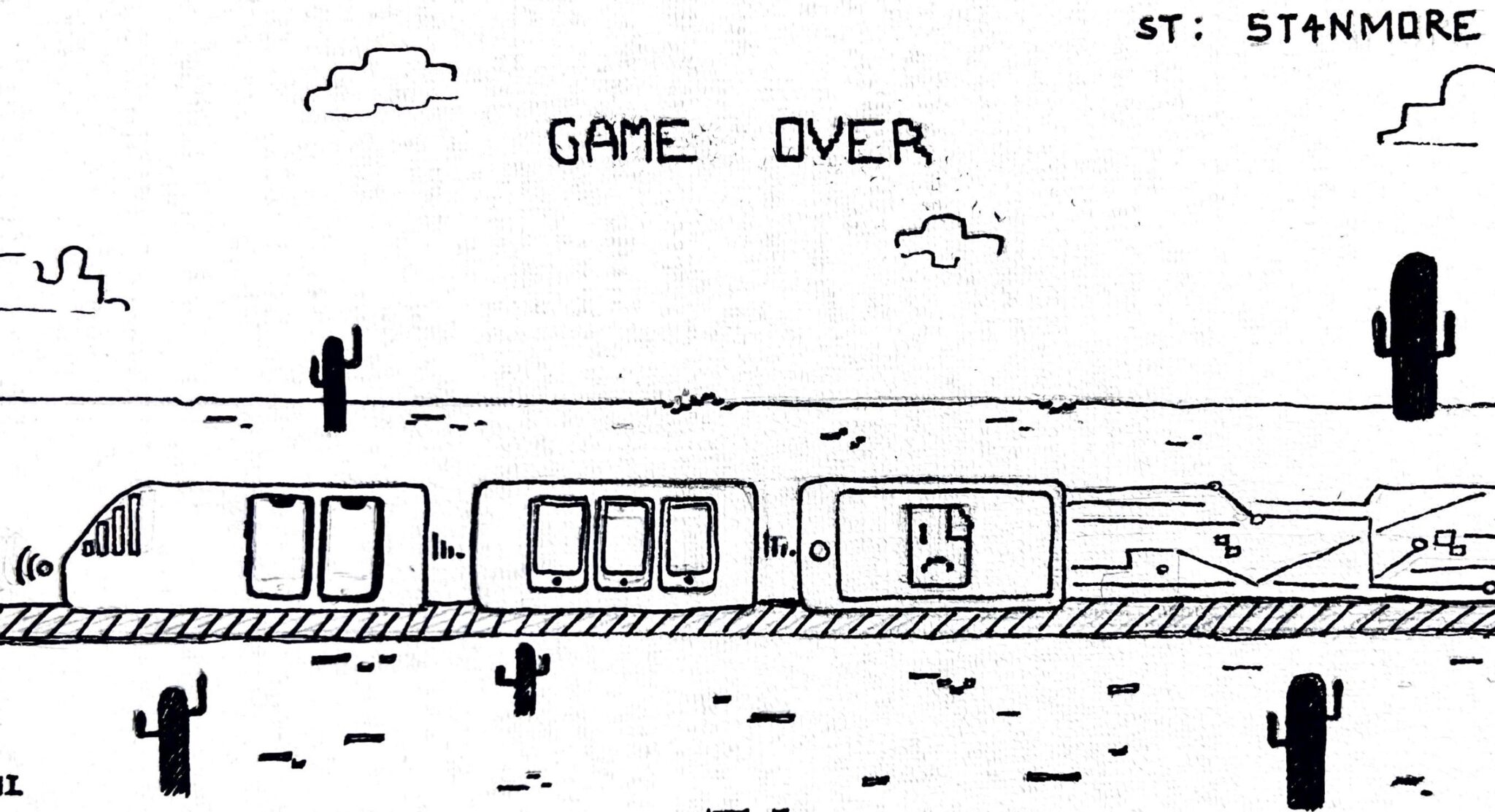I am always travelling through Stanmore station. From Summer Hill, trains to the City Circle stop at every station, and Stanmore immediately precedes my beloved Newtown.
At this well-off inner-city spot not far from the University, there is an anomaly which I am not the first to detect. Though the station has a good enough vantage point that the city centre can be seen from around it, my reception is invariably terrible, often cutting out entirely.
While investigating this weird occurrence I found a Reddit thread about a year old. Someone had wondered whether others had experienced the same issue, writing ‘I am with Optus and 5G drops to 3G or non[e] at all every time the train stops or passes by Stanmore.’ They state they previously had the same issue relying on Telstra.
The post generated a flurry of responses. While specific experiences varied, the overall picture was of poor or no reception across mobile networks in the surrounding area, whether living on the Petersham-Stanmore border, or travelling between Petersham and Newtown, or some other variation – the most extreme was travelling all the way from Strathfield to Redfern. One commented that upgrading from an iPhone 7 to a 5G-enabled iPhone 13 fixed the issue. I use a 4G-capable iPhone XR on the Vodafone network and receive poor or no reception at the station and on the line surrounding.
The Australian Communications and Media Authority offers an online map of mobile towers across the nation. However, the map was buggy, so I used the Radio Frequency National Site Archive one instead. It turns out there are plenty of mobile transmitters in Stanmore, nine in fact. Two of these directly surround the station and others are very near. There are towers for Telstra, Vodafone, Optus and TPG. According to Vodafone’s map, almost all of Sydney is a sea of coverage up to 5G.
Outside of that single Reddit thread, I failed to find anything online discussing this oddity. I decided to turn to an expert. Professor Branka Vucetic is Director of the Centre for IoT and Telecommunications at the University of Sydney’s School of Electrical and Information Engineering. She points out that although there are several potential causes for poor reception, ‘in this case, it’s clear that the more obvious ones, such as topography, geography, large buildings, and distance to base stations, may not be the primary contributors,’ the area being suburban with no high-rise buildings and multiple transmitters. ‘Moreover,’ she wrote, ‘network congestion is unlikely as it occurs at different times of the day.’
‘The most plausible explanation could be electronic interference from devices or equipment operating within the same frequency range as the base stations.’
There is a Digital Train Radio System (DTRS) transmitter a little west of Stanmore station. Could it be the culprit? According to Transport for NSW, DTRS operates on the 1770 to 1785 MHz and 1865 to 1880 MHz frequencies. Vodafone’s 4G network, which I rely on, operates on the 850, 1800 and 2100 MHz frequency bands. These numbers are only approximates of the frequencies used. The frequencies used by Vodafone encapsulate those used by the DTRS system, though the former also occupies a larger range. However, DTRS transmitters are all along Sydney’s rail lines, so this theory may be a dead end. In any case, Transport for NSW and Sydney Trains flagged the DTRS system as partially obsolete in 2022, and Sydney Trains stated last year that a major upgrade is planned pending further maturation in 5G technology.
A recent PULP piece indicates that a large proportion of travellers experience poor reception all the way from Ashfield to Redfern. In truth, the poor reception around the station or on a broader section of Main Suburban corridor, in my experience, is if anything a very minor inconvenience. When travelling on regional trains, one may notice much longer periods of poor reception. It is quite easy to go without reception for two minutes, and if you ever find your connection struggling as you travel, consider taking it as a prompt to put your phone away and look out the window instead.





